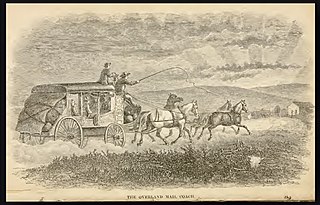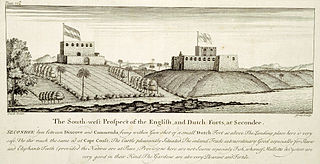
Accra is the capital and largest city of Ghana, located on the southern coast at the Gulf of Guinea, which is part of the Atlantic Ocean. As of 2021 census, the Accra Metropolitan District, 20.4 km2 (7.9 sq mi), had a population of 284,124 inhabitants, and the larger Greater Accra Region, 3,245 km2 (1,253 sq mi), had a population of 5,455,692 inhabitants. In common usage, the name "Accra" often refers to the territory of the Accra Metropolitan District as it existed before 2008, when it covered 199.4 km2 (77.0 sq mi). This territory has since been split into 13 local government districts: 12 independent municipal districts and the reduced Accra Metropolitan District (20.4 km2), which is the only district within the capital to be granted city status. This territory of 199.4 km2 contained 1,782,150 inhabitants at the 2021 census, and serves as the capital of Ghana, while the district under the jurisdiction of the Accra Metropolitan Assembly proper (20.4 km2) is distinguished from the rest of the capital as the "City of Accra".

The coal mining town of Dundee is situated in a valley of the Biggarsberg mountains in KwaZulu-Natal, South Africa. It is part of the Endumeni Municipality, Umzinyathi District. It is very rich in coal deposits. More populous than the town of Dundee is its adjacent township named Sibongile. This township is now being extended with many residing zones, e.g. Lindelani.

Butterfield Overland Mail was a stagecoach service in the United States operating from 1858 to 1861. It carried passengers and U.S. Mail from two eastern termini, Memphis, Tennessee, and St. Louis, Missouri, to San Francisco, California. The routes from each eastern terminus met at Fort Smith, Arkansas, and then continued through Indian Territory (Oklahoma), Texas, New Mexico, Arizona, Mexico, and California ending in San Francisco. On March 3, 1857, Congress authorized the U.S. postmaster general, at that time Aaron V. Brown, to contract for delivery of the U.S. mail from St. Louis to San Francisco. Prior to this, U.S. Mail bound for the Far West had been delivered by the San Antonio and San Diego Mail Line since June 1857.
The Fante Confederacy refers either to the alliance of the Fante states in existence at least since the sixteenth century, or it can also refer to the modern Confederation formed in 1868. The Confederation is seen as one of the first and most prominent self-rule movements in Ghana and the entirety of Africa. Its mission was to shake off colonialism and establish a modern free democratic state.

Anton Wilhelm Amo or Anthony William Amo was a Nzema philosopher from Axim, Dutch Gold Coast. Amo was a professor at the universities of Halle and Jena in Germany after studying there. He was brought to Germany by the Dutch West India Company in 1707 and was presented as a gift to Dukes Augustus William and Ludwig Rudolf of Brunswick-Wolfenbüttel, being treated as a member of the family by their father Anthony Ulrich, Duke of Brunswick-Wolfenbüttel. In 2020, Oxford University Press published a translation of his Latin works from the early 1730s.

The Royal African Company (RAC) was an English trading company established in 1660 by the House of Stuart and City of London merchants to trade along the West African coast. It was overseen by the Duke of York, the brother of Charles II of England; the RAC was founded after Charles II ascended to the English throne in the 1660 Stuart Restoration, and he granted it a monopoly on all English trade with Africa. While the company's original purpose was to trade for gold in the Gambia River, as Prince Rupert of the Rhine had identified gold deposits in the region during the Interregnum, the RAC quickly began trading in slaves, which became its largest commodity.

Harishchandra Fort is a hill fort in the Ahilyanagar in Nashik district of India. Its history is linked with that of Malshej Ghat, Kothale village and it has played a role in guarding and controlling the surrounding region.

Cape Coast Castle is one of about forty "slave castles", or large commercial forts, built on the Gold Coast of West Africa by European traders. It was originally a Portuguese "feitoria" or trading post, established in 1555, which they named Cabo Corso.

Winneba is a town and the capital of Effutu Municipal District in Central Region of South Ghana. Winneba has a population of 60 ,331. Winneba, traditionally known as Simpa, is a historic fishing port in south Ghana, lying on the south coast, 140 kilometres (90 mi) east of Cape Coast. The current member of parliament is Alexander Kwamina Afenyo-Markin.

The Battle of Corregidor, fought on 5–6 May 1942, was the culmination of the Japanese campaign for the conquest of the Commonwealth of the Philippines during World War II.

The 1st Cavalry Regiment is a United States Army regiment that has its antecedents in the early 19th century in the formation of the United States Regiment of Dragoons. To this day, the unit's special designation is "First Regiment of Dragoons". While they were the First Regiment of Dragoons another unit designated the 1st Cavalry Regiment was formed in 1855 and in 1861 was re-designated as the 4th Cavalry Regiment. The First Dragoons became the 1st Cavalry Regiment since they were the oldest mounted regiment.
The Efutu are an Akanized Guang people that are the original inhabitants of present-day Ghana. They founded the coastal area about 1390 C.E. The Efutu are found in Awutu, Adina, Senya-Beraku and Winneba and their main occupation is fishing. Like most Guans, they were somewhat absorbed into the greater Akan culture and adopted Akan names via annexing and military campaigns as the Akan were natural warriors. Similar to the Akuapem people of the Eastern Region of Ghana who are ruled by an Akan Abusua but was originally ruled by their own Guan kings. They also have adopted the Fante version of some Akan institutions and the use of some Fante words in their rituals. Before Akanization, the Simpa Kingdom was formed about 1400 AD.

The Brandenburger Gold Coast, later Prussian Gold Coast, was a part of the Gold Coast. The Brandenburg colony existed from 1682 to 1701, after which it became a Prussian colony from 1701 to 1721. In 1721 King Frederick William I of Prussia sold it for 7,200 ducats and 12 slaves to the Dutch West India Company.
Akwamu was a state set up by the Akwamu people in present-day Ghana. After migrating from Bono state, the Akan founders of Akwamu settled in Twifo-Heman. The Akwamu led an expansionist empire in the 17th and 18th centuries. At the peak of their empire, Akwamu extended 400 kilometres (250 mi) along the coast from Ouidah, Benin in the East to Winneba, Ghana in the West.
The African Company of Merchants or Company of Merchants Trading to Africa was a British chartered company operating from 1752 to 1821 in the Gold Coast area of modern Ghana, engaged in the Atlantic slave trade.
The Aboakyer festival is a bushbuck hunting festival celebrated by the people of Winneba in the Central Region of Ghana.

Fort Sekondi, also Fort George, was an English fort on the Gold Coast, built in 1682 at Sekondi, next to the Dutch Fort Orange, which had been built in 1642. This first building was small, according to William Claridge: "[...] at Sekondi [...] Captain Henry Nurse, Agent for the English Company, also built a fort there a few years later. Both these buildings were of about the same size and only a gun-shot apart", and, "The Dutch Fort Orange was a very small place, being merely a square white house in a yard, mounting eight or ten guns on a terrace on the roof. The first English fort had been a very similar building [...]". This fort was destroyed on 1 June 1698, during the Dutch-Komenda war, and reduced to blackened outer walls. Although denied by the Dutch, reports and letters sent at the time indicated that the Dutch instigated the attack and that some plundered goods were taken to Castle Orange next-door. Attempts were made to rebuild it in 1700, though these had to be abandoned because of hostility from the indigenous population.
Fort Tantumquery is a military structure designed to facilitate the slave trade. The Royal African Company built it in the 1720s, at Otuam in the Mfantsiman Municipal District, Central Region, Ghana, in what was known at the time as the Gold Coast.

Alexander Kwamina Afenyo-Markin is the Member of the Parliament of Ghana for the Effutu constituency, Central Region. He also serves as a member of the Committee on Defense and Interior Committee in Ghana Parliament. He was the Deputy Majority Leader in the Parliament of Ghana until February 2024 when he was promoted to the role of Majority Leader as part of reshuffle by President Nana Akufo-Addo and the leadership of the New Patriotic Party.















